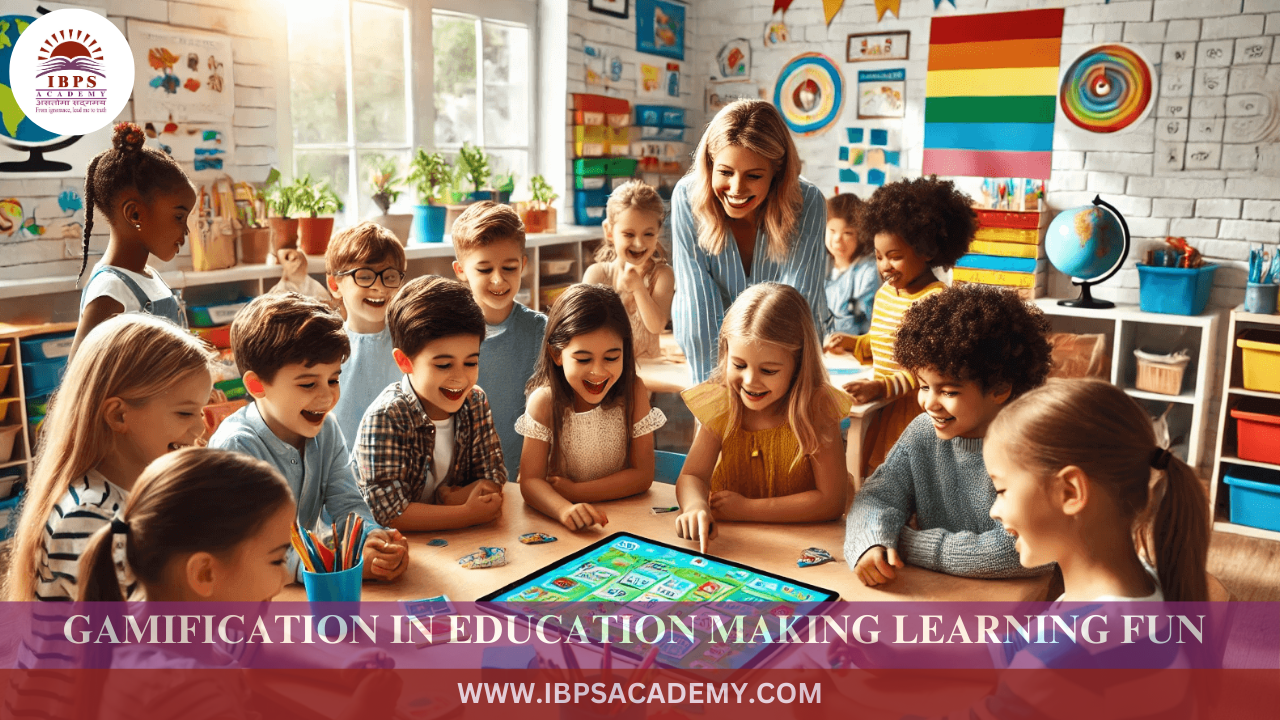

GAMIFICATION IN EDUCATION FOR MAKING LEARNING FUN
Gamification in education refers to the integration of game elements and principles into the learning process to enhance student engagement, motivation, and achievement. The primary goal of gamification is to make learning more enjoyable and effective by incorporating elements of play, competition, and rewards typically seen in games.
Point Systems: Students earn points for completing tasks, activities, or assessments. These points serve as a form of recognition for effort and achievement, and they can motivate students to keep progressing.
Badges: Badges are digital or physical rewards that students earn for accomplishing specific tasks or mastering certain skills. They represent milestones in the learning journey and help students feel a sense of accomplishment.
Leaderboards: A ranking system where students' progress is compared with others. While leaderboards can encourage friendly competition, they need to be used carefully to avoid discouraging students who may be struggling.
Levels and Progression: Like levels in video games, learners can advance through stages of increasing difficulty or complexity. This sense of progression can motivate students to continue learning, as they feel a sense of achievement with each new level.
Challenges and Quests: Incorporating missions or quests into learning tasks gives students a sense of purpose. Completing these challenges allows learners to feel they are achieving something beyond the regular classroom experience.
Instant Feedback: In a game, feedback is instant, and gamified education seeks to replicate this. Students get immediate responses to their actions (whether right or wrong), which helps them adjust and improve quickly.
Narrative and Storytelling: Many games incorporate stories to engage players emotionally. By embedding narratives into educational content, students can feel more connected to the material and more invested in their learning.
Increased Engagement: When learning feels like a game, students are more likely to stay engaged. The fun elements of gamification—points, levels, rewards—keep students actively participating rather than passively receiving information.
Enhanced Motivation: Students often become motivated by the desire to achieve rewards, complete challenges, and level up. This intrinsic motivation can drive students to perform better and persist through challenges.
Personalized Learning: Gamification allows for differentiated learning experiences. For instance, students can work at their own pace, choosing challenges appropriate to their skill levels, ensuring that no one is left behind or overly challenged.
Improved Retention: Games are known to be immersive and memorable. Gamification, with its interactive and hands-on approach, helps students retain information better by linking it to meaningful experiences rather than passive memorization.
Collaboration and Social Skills: Many gamified learning activities encourage collaboration, whether it's through team-based challenges or group problem-solving. This helps students develop social skills, teamwork, and communication abilities.
Safe Environment for Failure: Just like in games, students can try again after failure. In gamified classrooms, mistakes are viewed as part of the learning process, which helps to reduce the fear of failure and encourages experimentation.
Classcraft: This is a platform that turns a classroom into a role-playing game (RPG), where students create avatars, earn points, and unlock rewards. The system encourages collaboration, positive behavior, and academic performance.
Duolingo: A popular language-learning app that uses gamification techniques such as points, levels, and streaks to motivate learners to practice daily and improve their skills.
Kahoot!: This game-based learning platform allows teachers to create interactive quizzes and polls that students can answer in real-time. It turns assessments into competitive, fun activities.
Badges and Certificates: Many online learning platforms like Coursera, edX, and Khan Academy use badges and certificates as rewards for course completion or mastery of specific skills, which adds a gamified aspect to the learning process.
Overemphasis on Competition: If not balanced properly, leaderboards and competition can create unhealthy rivalry, stress, and frustration for students, especially those who are not performing well.
Excessive Focus on Rewards: Students might become overly focused on external rewards (points, badges) rather than developing a deep understanding of the subject matter.
Increased Screen Time: Some forms of gamification, particularly those involving digital platforms, can lead to increased screen time, which may negatively affect students' physical health and social interactions.
Accessibility: Gamification strategies and tools may not always be accessible to all students, particularly those with disabilities or limited access to technology.
Gamification in education is a powerful tool to transform traditional learning into a more dynamic, interactive, and enjoyable experience. By integrating game-like elements, educators can foster a more engaging and motivating environment, helping students stay invested in their learning while enhancing their skills. However, it’s essential to find the right balance, ensuring that the focus remains on learning outcomes and that the competitive elements don't undermine collaboration or inclusivity. When used thoughtfully, gamification can truly make learning fun!
